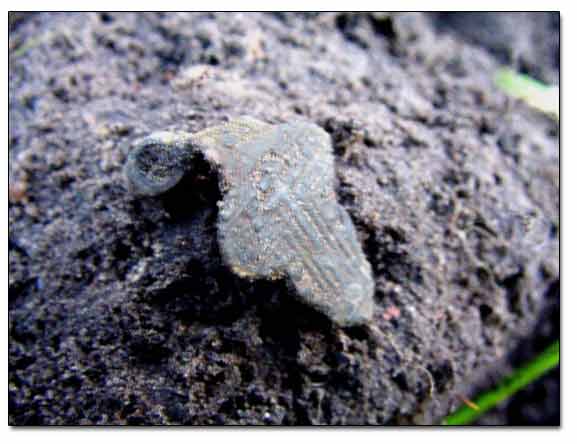Metal Detecting "Unsearched-Out" Site, page 11
It Is Best To Familiarize Yourself With Types of Coins You May Unearth In Search Area
I was having fun! Next signal was a low tone signal which also indicated a deep target. I dug up a thin copper coin that looked like the coins that I had seen in the book on the feudal coin mints in medieval Europe. From that book, I had learned that a few feudal kingdoms in Poland, Hungary, and Lithuania minted thousands of coins that flooded the Western Russia for a few centuries.
It continued until the early 1700s when Peter the Great finally devalued all foreign coins by imposing the first monetary reform in Russia. I could not determine what coin it was, neither its face value. But I knew it was older than any coin Tahhir and I had found at the site so far.
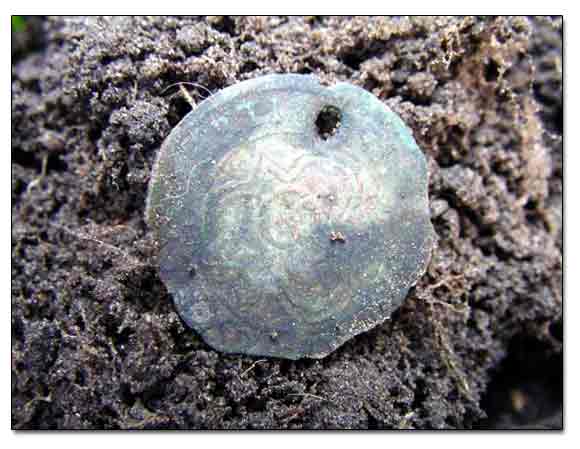
A hole in the coin suggested that the coin was put on a thread along with many other coins for two reasons: 1) it was used as a standard to which similar coins would be compared during transactions at the market or 2) it was used as a dress decoration like the one of a gypsy. The coin certainly did not belong to the area and was brought here from other parts of Russia or Europe.
Jetton After Being Cleaned
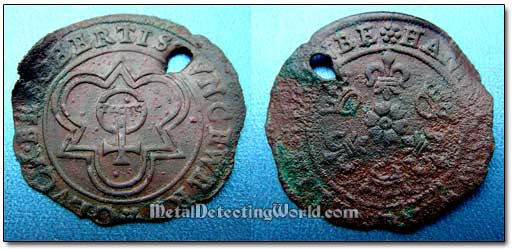
I received the same signal right next to the hole that I had just filled. The target was a fragment of a coin that was identical to the previous one.

When I was rechecking the hole, I got another signal. It was slightly lower in tone and turned out to be a small crucifix.
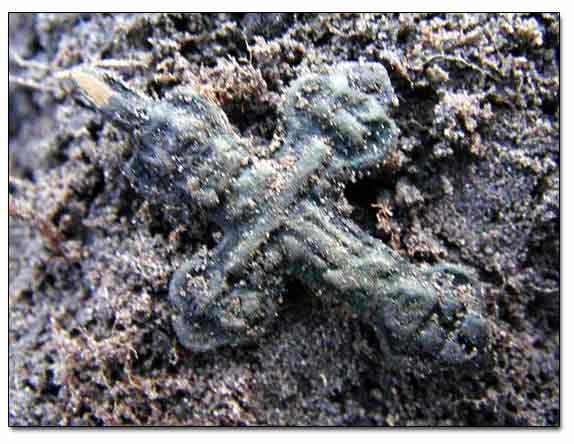
I started metal detecting around the hole in a circular pattern and dug up another holed coin from the 17th century. It differed from other coins by its design: it had a queen Maria profile on one side and a profile of some king on another. It would be extremely difficult to ID the coin due to its poor condition.
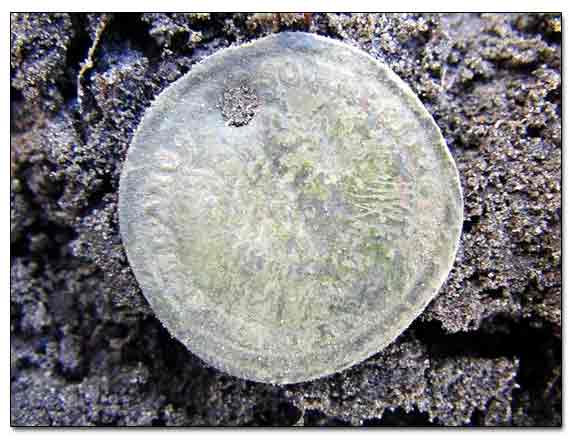
When I unearthed another small cross, I realized that the further away I was moving from the tree towards the woods the more good targets I was recovering.
